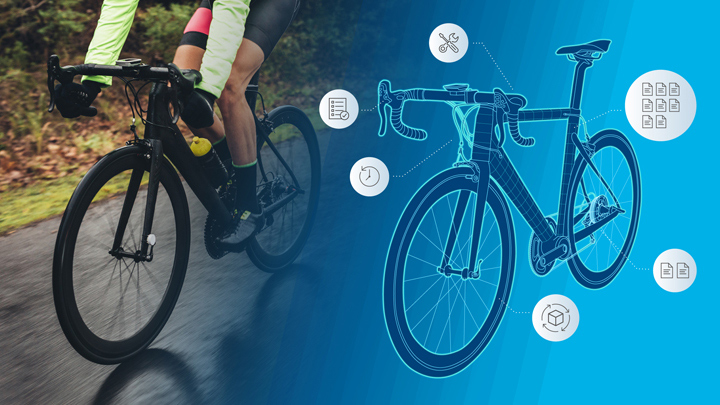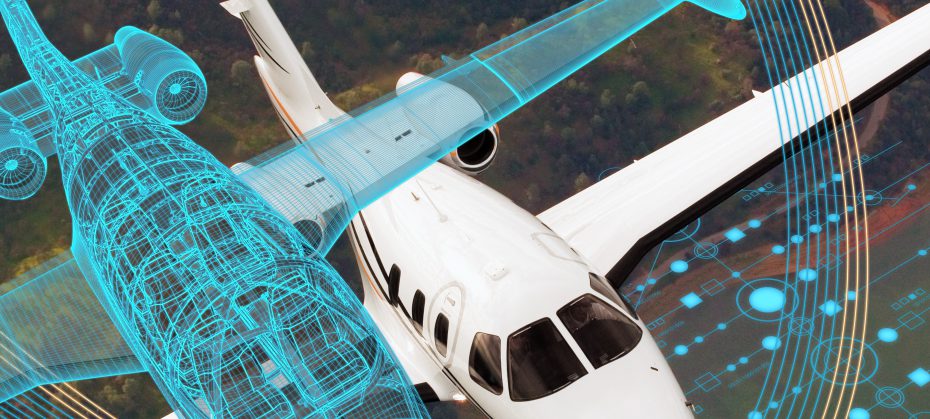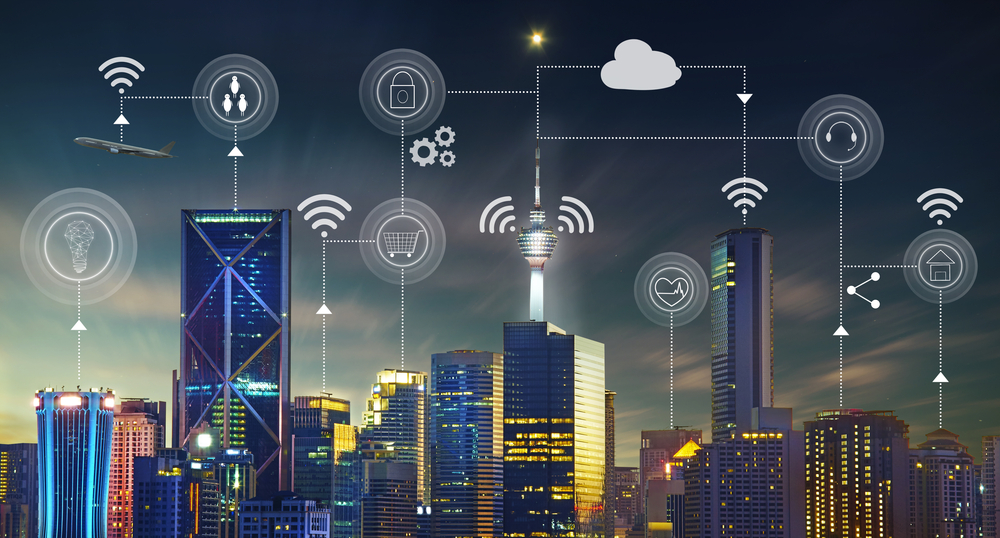How Digital Twin Technology Works in Practice


According to Gartner Analytic Reports, digital twin technology may take a leading position in top trends that will shape business environment in major market sectors. Analysts highlight the potential of digital twins as ‘fundamental blocks for digital initiatives’ that elevate IoT adoption and enable IoT usage in business operation on daily basis. With 21 billion connected sensors predicted in 2020, we should expect emergence of billions of digital twins in IoT.
What is Digital Twin Technology
Digital twin is the virtual copy of the physical objects or assets. The term was coined in 2002 by Dr. Michael Grieves who introduced the concept of reaching a new level of manufacturing excellence through virtual replication.
Digital twins definition implies that this technology makes a deep transformative impact on all the market sectors due to its wide capabilities in bridging the gap between the real and virtual worlds by connecting data from installed sensors in real time.
It has the ability to represent dynamics of how an Internet of Things device works and operates, which translates into wide application of digital twins in Internet of Things making them more affordable for consumers and cost effective for many businesses.
How does digital twin work?
The process suggests that data is evaluated and simulated in virtual copy of the assets. After retrieving the data, parameters are applied to assets and integrated for virtually precise representation. The collected data can be either locally decentralized or stored in a cloud. It helps optimize performance of real assets, which makes digital twins irreplaceable in advancement of any manufacturing process based on using virtual replicas of the product.

Image: Fabasoft
Digital twins technology embodies the complex process of virtual presentation of elements and dynamics of connected device throughout its lifecycle. When done correctly, digital twins demonstrate the ability to coordinate the components into a single facility of operational oriented design to ensure the superb quality of any product.
How Manufacturing Giants Use Digital Twins Technology
Digital twins application has expanded globally due to the ability of this technology to merge machine learning, artificial intelligence, and software analytics that are particularly important in IoT market. The digital twin environment is forecast to increase by 37% compound annual growth rate up to 2023.
Companies apply digital twin technology for shifting ongoing operations to a new level of efficiency. Digital twins help test products prior to launching them and reduce the risk issues to minimum. Digital twin use cases are exemplified in a wide range of industrial sectors from production and manufacturing to maintenance and providing service.
NASA was one of the pioneers that applied digital twins for space exploration missions when creating operational, maintenance and repairing systems of their space equipment.
Siemens is a manufacturing giant that recognizes digital twin technology and actively uses digital twins in their nonlinear product modeling.

Image: CTS
Stara holding the leading positions in tractor manufacturing altered the production processes by implementing the Virtual Counterpart technology, which translated in increased business efficiency and improved customer experience.
Another digital twin technology example pertains to Formula 1 car racing. Simulation with implementing digital twin technology assisted in enhancing car performance on the track and increasing driver’s safety.
Digital twin technology applications
Application of digital twin technology brings a breakthrough to lots of industries. Among most prominent cases that celebrate the first results of successful digital twins technology application, there come:
- Manufacturing sector
- Retail
- Vehicle production
- Healthcare
- Gas and oil production
- Construction
- Smart cities.
Manufacturing Sector
In particular, with digital twin manufacturing options, manufacturers get a digital mockup of any product that can be evaluated in terms of matching a digital design and its projected final product functionality.
Production process gets not only a greater consistency and faster product launch but an improved lifecycle through obtaining the instant feedback. Overall, digital twins applications in manufacturing cover areas from business administration to production and supply functions.
Digital twins in manufacture are presented across any area. For example, the above-mentioned Siemens Company offers Digital Enterprise Suite solutions based on digital twin technology: it helps integrate software and automation on a central data platform for optimizing manufacturing processes of any complexity.
Retail Sector
Digital twins in retail open huge opportunities for retailers in terms of monitoring consumer activities in online stores and on social media. Implementing digital twins technology in retail sector helps standardize consumer-related information on one digital platform enabling retailers to deliver personalized solutions and cater to target audience needs with precision. Besides, retail industry actively deploys digital twins for tracking products in the supply chain.
Nowadays, retailers are interested in building real-time digital representations of their stores including the floor plan, staff location across the floor and the layout of products. Applying this technology adds value to the customer experience and increases retail revenue.
Furthermore, with digital twins, retailers focus on creating their apps so that they also helped to enhance the customer experience by tallying consumers’ choices and, consequently, being able to meet consumer’s particular needs.
Healthcare Sector
Implementing digital twin in healthcare unlocks multiple options of provision the personalized and timely care to every individual.
Due to rapid development of digital twins technology, creating a virtual copy running in the cloud is now accompanied with enrichment on additional operational data, which increases the healthcare providers’ chances to deliver innovative solutions to their customers seamlessly.
Digital twins in healthcare are recognized as one of the most promising trends of the coming decade due to its capabilities in providing patient-centric care.
Digital twins in healthcare ensure building a patient’s rich data record enhanced with AI-powered models that can be applied in clinical practice and create the positive outcomes of specific procedures.
Oil and Gas Sector
With digital twin oil and gas solutions, these industries redefine their business boundaries. Digital lifecycle management of gas and oil industry assets can be easily optimized by avoiding pitfalls of downtime. Apart from it, digital twins open new opportunities for business improvement in regard to progressive storing the inspectional and operational data. In addition, they assist in minimizing efforts on manual processes, backing up information on engineering activities and eliminating any associated risks.
When equipped with advanced embedded analytics, gas and oil industry professionals can improve utilization of plant assets and considerably extend service life of the machines. Digital twin technology in gas and oil is one of the sure ways to getting industrial insights in real time and, thus, reach the operational excellence. Applying digital twins in gas and oil significantly shortens the implementation time of the engineering solutions and facilitates assets management.
Smart Cities
In 2018, Dassault Systèmes software company introduced a digital twin of Singapore, which became widely known as 3DEXPERIENCity. It has been the first country digital twin in the world that produced a groundbreaking effect in many market industries.
Practically speaking, introduction of Singapore digital twin created a global precedent as the whole territory shifted to a new level of town planning. It ensured infrastructure management with guaranteed efficiency, which translated into tangible improvements for lots of citizens.

The advantages of building smart cities by creating digital twins can deeply transform city planners’ work and fine-tune sectors prone to challenges including the energy consumption sector.
Wrapping It Up
Digital twins technology is applied across any industry making a positive impact on product quality and accelerating the speed of service delivery due to implementing real-time simulation and representing the Internet of Things devices operation in dynamics.
Predictably, product and business owners recognize the multiple advantages of creating virtual replica of their assets as application of this technology ensures not only cost reduction but increases market offers of high quality products that benefit customers.
Build your ideal
software today

